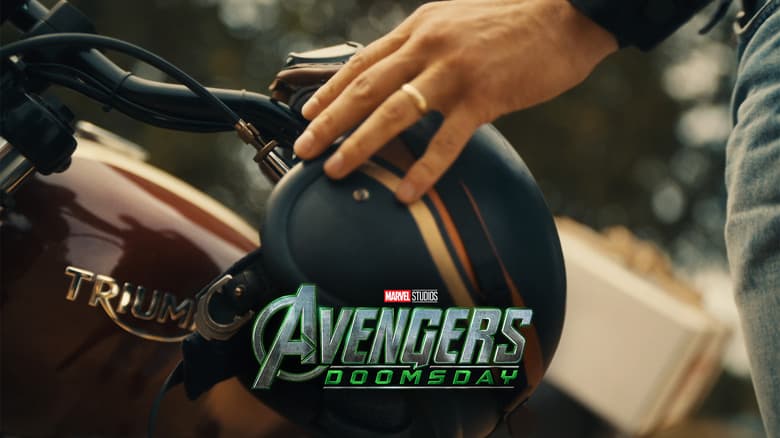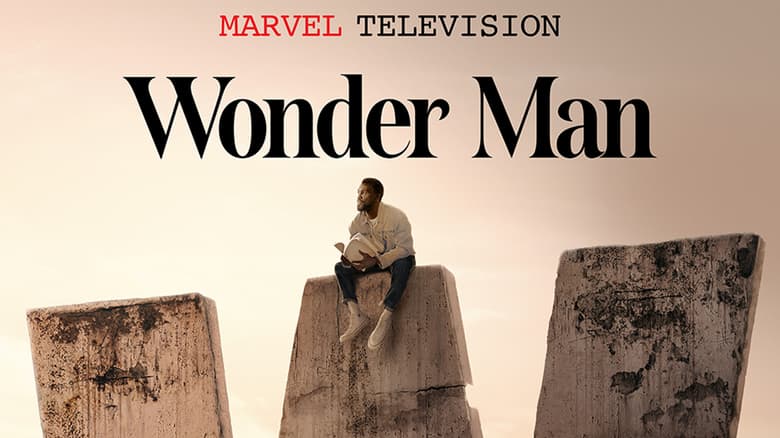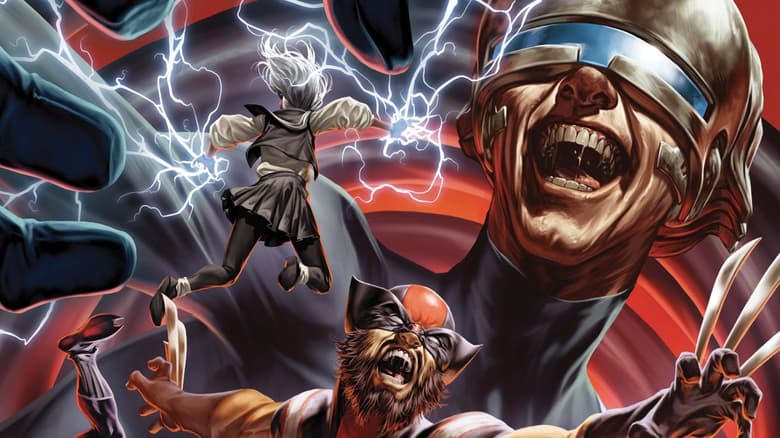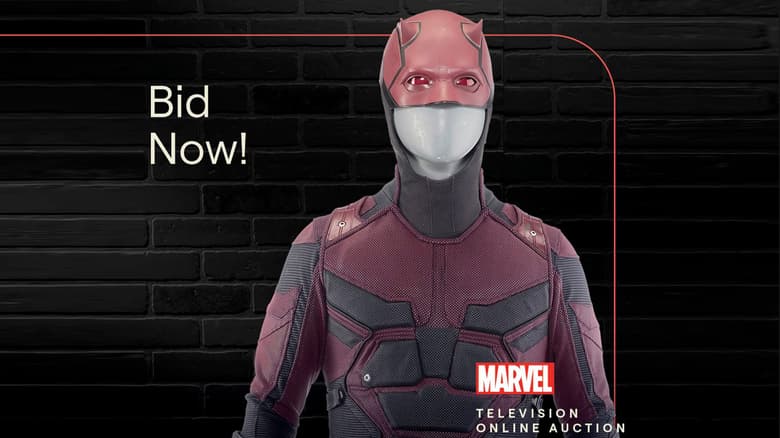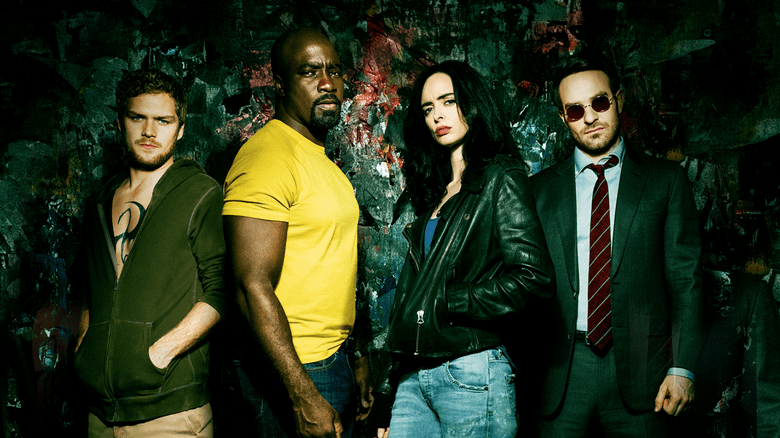Stunt Coordinator Clayton Barber Gets Into Season Two Stunts on 'Marvel's Iron Fist'
Season 2 exclusively on Netflix now!
Season 2 of "Marvel's Iron Fist" is a lot more intense and action-packed, and we can thank fight/stunt master Clayton Barber (Marvel Studios' "Black Panther," "Creed") for that.
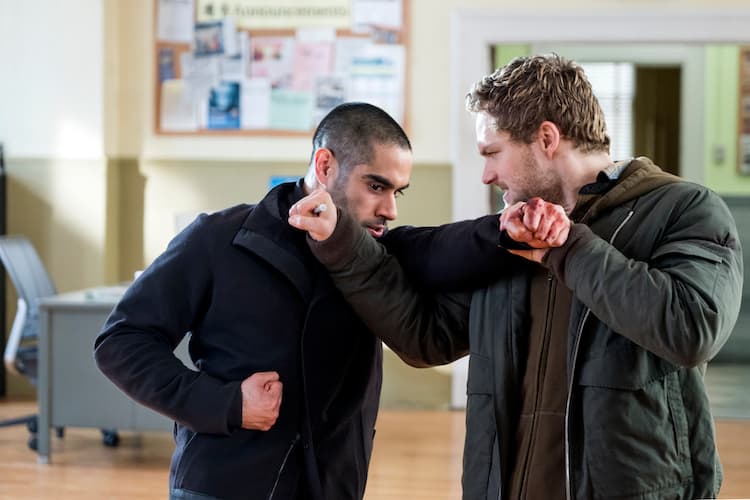
Marvel's very own Tucker Markus had the opportunity to sit down with Barber as well as learn some signature moves of the Immortal Iron Fist during an interactive event. Read on to learn some of Barber's inspirations, approach to his craft, and his focus for this current season of the Netflix original series.
Marvel.com: If you could really synthesize what you wanted to achieve this season of "Marvel's Iron Fist," how would you describe it in just a few words? What did you set out to do from the very beginning?
Clayton Barber: Conviction, discipline, and heart. I wanted to not think about the past and focus on the present. I believe that actions have consequences. I believe that if you focus on something, the consequence will be your future. What I try to say to all the actors… all the actors that come through… is that we are a team, we’re a family, we’re in here to make mistakes, but you have to come up and perform at this point because it will affect your future. It has nothing to do with your past. It has everything to do with what you’re doing in the present, in the future, and that’s what I try to instill.
This is a very serious thing. Just because you’re an actor, don’t just think that you’re going to be doubled and you can just go to your trailer and drink coffee, no, most fights scenes are not stunt scenes. They’re DRAMATIC scenes that you have to play and you’re the character. And if you don’t know how to play that, then what are you really doing? So I make them realize that they have to connect the tissue together by investing their time and their energy and playing this character. And if they don’t want to play the character, then they should go home. And I say that to them sometimes.
A lot of the time before I take a job I say—I look at them in the eye and I shake their hand and I say, “Are you going to commit to this?” And when they don’t, I go back to the producer and say well, I can’t really do you any good here because you have a horse that doesn’t want to run around the track.

Marvel.com: Already I’m so fascinated because of that work perspective… that what you do now affects what you do in the future.
Clayton Barber: Correct. But the meaning there is that if you do a really good job on this show and you do a really good fight scene, now or in your future, someone’s going to see this and some producer or some writer is going to see it and go “Holy Smoke!” And there’s going to be this great $100 million show that’s going to need a person to play this part, and guess who, guess what? You might get that part.
Why? All because I saw you on this show called "Marvel's Iron Fist," and I really want to catch them in... And that’s what I try to make them believe is that everything you do affects what people think of you, how it’s going to be, and what your future’s going to be.
Marvel.com: Exactly that. I’m so interested in your position as this manager, this person who has this bird’s eye view on everything. Because when you say that, I’m completely hearing how that is so reflective in the character’s journey in the show. What’s your perspective on that? How do you weave those two together? How do you say this is where this character is at this point, at the start of the show, and then how it’s different when we’re shooting the last episode, or whatever it might be. How do you make that same statement, but from a character perspective?
Clayton Barber: They’re interwoven. Like I said, what I do is not “choreo.” It’s not just choreography, it’s “story-o” and I coined the phrase “story-o.” Whatever that character’s journey is, I have to make the story-o match the choreo for the character’s journey so that he can arc and have some place to go. At the beginning of the season, like we talked about earlier, Colleen is reluctant to fight. She’s hung up her sword. I do all of the story-o and choreo around that. Whereas Finn’s is out destroying the world and becoming the protectorate of New York City and trying to clean up all the gang wars and trying to do good deeds. His journey starts one way and by the end of the season he’s on another way. The same with Colleen: she starts one way and then she’s on another way. Sasha—his roles start one way and, then through the middle of the movie, he takes a different turn. Our choreography and our story will exemplify that. They are interwoven.
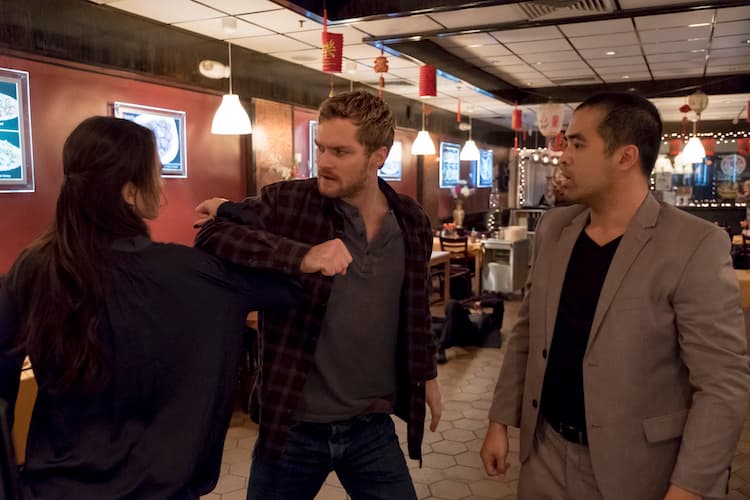
I don’t look at things just from a choreography standpoint. I take into account what the writer wants to do, what the director wants to do, what the producer… and things like that, because they’re the ones that know the characters the best. They’re the ones that are putting it out there and I listen to them. After I do that, I just kind of try to find some common thread. You’ll throw out a few passes at something and you might be a little bit left or a little bit right of it, but eventually you’ll find the truth of it based on repetition. Repetition cures all truth. Think about it.
People always come up to you, “what’s your secret?” Repetition. They go, “that’s it?” Repetition. It’s like going and hitting a golf ball at a range. You need to go hit 1000 golf balls at a range before you can hit a golf ball right. Well, how do I do this much better? Practice more. And then I’ll walk off and get a coffee, and they’ll go, “Did he just say practice more?” And I’ll say “Yeah, you asked me some mythical question: ‘how’d I get better?’ Practice more.
Marvel.com: From the perspective of the mythology or the elevated stance that the mantle of the Iron Fist holds… I’m so curious because Finn was talking about the journey that he goes on from the beginning to the end of the story in terms of mastering that, in terms of really taking in what that means. And then I was speaking to Jessica about where she is with her reluctance at the start of the story and then taking on the Fist herself. What do you see as the special influence that the Fist holds with someone? Is it like the person has leveled up? How does that manifest on the granular level, scene by scene, fight by fight?
Clayton Barber: The Fist is about power, but to each character that power means something different. From Davos’ perspective, that power means this, from Colleen’s perspective it means that, and from Danny Rand’s perspective it also means this. So there are all conflicted. They all have different ideas of what getting that power means to them. So, I just try to understand that and the process…. When they do get that power, how does that affect them, and how does that affect them going forward with their character, with their movement, and things like that? It is very important for me to take that into consideration.
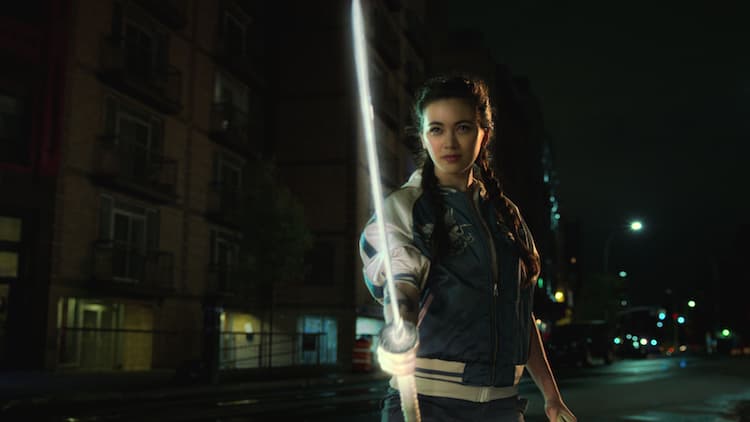
Marvel.com: I’m curious—from a large Marvel perspective—about "Black Panther." What did you take from that experience? How was that different from working on a show? I would imagine mapping out the character arcs and things like that was very similar, but can you just speak from a wider perspective of your experience there and how that impacted you coming into "Iron Fist"?
Clayton Barber: "Black Panther," obviously, it’s a bigger film so you have more money and more time. I think we had literally 30, 40, 50 characters between Wakanda, the Dora [Milaje], Chadwick Boseman, Winston [Duke], and Lupita [Nyong'o], and Danai [Gurira]. You have a lot of different people you’re dealing with, but you have a large support system with that. On that one, I’m the fight coordinator. You have stunt coordinators, you have 2 or 3 stunt coordinators, and you’ve got a huge fight team. You have a huge support system to do it.
The process itself is exactly the same—there is no difference—the only difference is that you’re translating it now into the format of TV so you have a little less time, so you’ve got to really jump to the chase. That’s the big difference: it’s just jumping to the chase. Nurturing them, training them, getting in their heads is the exact same. I don’t treat anything differently just because it’s one thing or the other, but I acknowledge that it’s different because of the pace and what’s been given to me. There’s a difference between having $200 million and 8 million or 10 million, you know what I mean, and it’s as simple as that.
Marvel.com: Does that just manifest in the way of time?
Clayton Barber: It’s just all about time. Like I said, the more time you have with doing anything…. The more time you have riding a car or a bicycle, you get better at it. The more time you write your name, you get better at it. It’s just about time. I try to be very straight to the point. The quickest way between two points is a straight line. I try to go a straight line in communicating, talking, learning the choreo, and learning what I’m doing because you don’t have time to teach them the minutia of… this is the way it would be like here and like that. I teach the same way you learn how to…. When you go to a shooting range, like when Keanu Reeves was learning how to shoot for "John Wick." He goes there and by the time he leaves, he knows how to hit the targets ten for ten. He doesn’t need ten years of practice doing that because you simplify it: point the gun and shoot. Simplify: punch, kick.
You get them to be able to process the language much easier than going “Well, you know back in the day you would have done it like THIS.” All of a sudden, you try to give them 8 perspective on how it’s done and they’re confused. I just say, “Don’t think. Just do.” “Ready? Point A to Point B.” The shortest distance is a straight line. “Act. Don’t think.” “Do it.” And it works because the more you make them think, the more confused they are, the more neurotic they are, the more academic they are. I try to take actors away from being academic and just try to make them simplify things to the way you would tell a five-year-old kid. You bring it down. You say, “Here! Do this.” Don’t go: “You know, yeah…” And they go, “But my character….” Your character needs to hit this mark, say your line, punch, and walk off of camera. And guess what? They do it 99% of the time, and it’s beautiful. (He laughs.) Then, we can talk about the character later on.
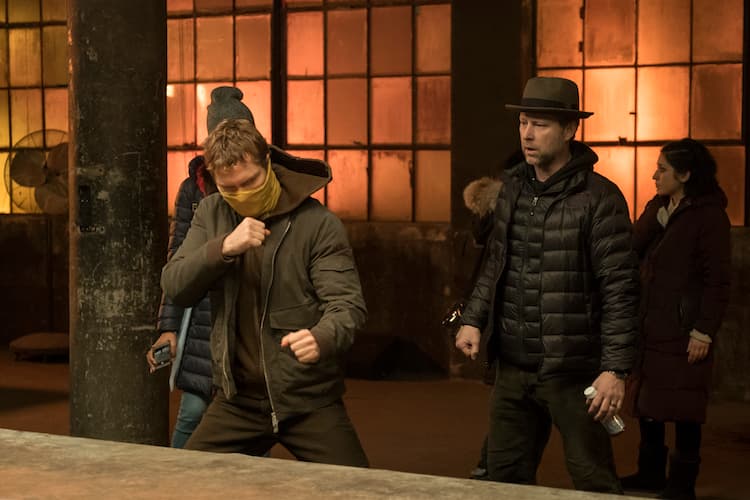
Marvel.com: What kind of conversations does that bring up in terms of, like you were mentioning before, your work with the director, the producers…? How do you kind of balance those things in your work as the manager of all these things?
Clayton Barber: Exactly. I’m a manager of a stable of fighters, and then I report back to the emperors at the head and I say, "Hey guys, this is what’s happening; That’s what we’re doing. This is great, do that." Or I say, "This isn’t working; I recommend we do this. This isn’t great; do that, go that way." At the end of the day, we get exactly what they intend to do, what the showrunner intended to do, what the writer intended to do, and what the directors intend to do—achieve our objective. It’s not always a perfect path. You have to really find out how far we can take these guys and how far or how well the scene really makes sense. A lot of the time you’ll test and prove, R&D something, and you’ll realize that what was on the page, what you put down, didn’t work. And you have to find something that does. That’s where you’ve got to really get the collaboration of the director to come into the rehearsals.
I brought the director and the writer into the majority of all of our choreography and rehearsals, because I wanted to hear it from the horse’s mouth instead of running in circles, doing something that wasn’t on their minds. I wanted to say, Tell me what you want. Tell me what your story is and I will fix it from there. I would bring them in sometimes and say this isn’t working because these reasons. Give me a better story solution. And they would say, well, what about that? Perfect! And then I would go on and manipulate the story. Without the director, without the showrunner and the writer being there, it’s hard to do, because sometimes you’re chasing your tail in a circle.
Marvel.com: Right. It’s hard to be no nonsense if you don’t know what the canon is.
Clayton Barber: There’s a higher level. I don’t know everything about these universes. I’m not. I don’t sit and like—they research and know everything about these characters and these worlds. They know, specifically, every power, every dress, every wardrobe, what they do. I know a little bit, but every time I do the show, I have to learn it as well. In a way, they’re my teacher of the story and then it’s my job to create the story of the action conducive to what they’ve taught me.
Marvel.com: In that vein, I’m curious about the influence of the comics—your exposure, even interest, in what that can bring to the story and from a larger perspective, your inspirations across the board. Across media, across your experience, across other films, TV shows….
Clayton Barber: To be honest with you, growing up, I didn’t read a lot of comics. I wasn’t a big [fan of] comics. That came a little bit after my generation, per se, but I participated in all the comic book movies like Blade, and all that stuff. I got to learn the comic book universe by participating in it, not reading it. So that’s the difference between me and a lot of everyone else around me. Like I said, they’re academic, they know everything. “Wow I know this. This character did this…” And I’m like I have no idea. All I did was I made the movie of that, and I know he did this and did this.... That’s when I rely on people. It’s almost like someone who is a computer genius, who knows how to program…. He knows how to write the program, he understands everything about it; whereas me, I understand the gist because I try to keep things very simple for me. That’s why I’m not a writer. I’m not writing every detail of how he wears red shoes, he eats a steak on Thursdays…. I’m just saying okay, what do you want him to do, what are his powers, and what is the heart of this character? And I’ll help you create the best steak, best red-shoe character you’ve ever had in your life.

Stream Season 1 and 2 of "Marvel's Iron Fist" on Netflix now! Keep your eyes right here on Marvel.com for all the updates, plus follow @MarvelIronFist on Twitter and like “Marvel’s Iron Fist” on Facebook.
The Daily Bugle
Can’t-miss news and updates from across the Marvel Universe!
